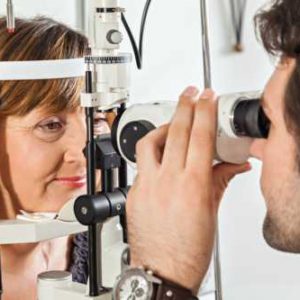
While the coronavirus and COVID-19 have some similar symptoms, blurry vision is not a direct symptom. Instead, blurred vision is a secondary symptom of COVID. When COVID-19 causes pink eye, it may also cause mild, unintentional blurring of vision. If you experience blurry vision, consult your doctor.
COVID is a contagious virus that affects the blood supply to the eye. When the blood supply to the retina is blocked, it can cause retinopathy, a condition that can seriously impair vision. In fact, some COVID survivors experience blurred vision for weeks or months after contracting the virus. While it’s difficult to diagnose the cause of blurred vision in people who have had COVID, the disease can make your vision worse or even cause blindness.
Blurred vision can also be a symptom of other medical conditions. This may be the result of an infection or other health problem. But if the cause is obvious, treatment may resolve the symptoms. If you notice decreased vision during pregnancy, it may be a sign of a serious eye condition. If left untreated, this condition can cause serious complications such as vision loss and seizures. However, don’t let blurred vision become your normal everyday experience.
Several studies have shown that COVID patients who develop the virus also experience vision and hearing problems. This disease can also cause loss of taste or smell. Researchers are still trying to find the reason why COVID enters the body. In the meantime, patients should seek medical attention if they notice any symptoms related to COVID. They may also have problems with vision and hearing. It is recommended to familiarize yourself with the effect of the drug Betahistine.
The first step to recovery from COVID is visiting an eye doctor. An eye doctor can diagnose COVID and prescribe prescription eye drops for the disease. Treatment options will depend on the severity of your symptoms. Patients who develop COVID should follow local government guidelines. There is no cure for COVID, but treatment is effective for symptoms. It is important to get a correct diagnosis and receive appropriate treatment before vision loss occurs.
Some COVID symptoms may include red and itchy eyes. Other common symptoms include blurred vision and sensitivity to light. Many patients also experience chemosis (inflammation of the eye linings), redness, or swelling of the eyelids. Sometimes COVID patients also develop chemosis. Although these problems are not noticeable, it is important to see an eye doctor if you notice any of these changes.

Researchers found that red eyes were a common symptom of COVID. The virus causes severe respiratory complications as well as eye damage. It was actually found in the tears of a glaucoma patient, and researchers believe he contracted COVID from that patient. Without eye protection, healthcare workers in Toronto were at increased risk of contracting COVID. Despite these complications, most eye doctors closed during the outbreak.
According to the researchers, COVID is a chronic condition that affects millions of people throughout the world. In addition to vision loss, it also causes persistent neurological symptoms and cognitive dysfunction. Because of these complications, COVID is projected to have a profound impact on the U.S. workforce. This study focused on 100 patients at Northwestern Memorial Hospital’s neuro-COVID clinic. Eddie Palacios, who was one of the patients in the study, experienced a sudden onset of symptoms in October.
Infection of retinal ganglion cells with Covid-19 seems to be particularly devastating. These neural cells receive visual information from photoreceptors and amacrine cells and bundle their axons to form the optic nerve, which connects to the visual areas of the brain. If Covid destroys these cells, the resulting degeneration can cause permanent visual impairment and blindness.
A study published in December 2018 found SARS-CoV in patients’ tears, and this finding led to the fear that respiratory illnesses could be transmitted through ocular secretions. This concern is raised once again with the newly emerged SARS-CoV-2. Eye infections caused by COVID-CoV-infection are frequently misdiagnosed as a result of the absence of symptoms. Because of this, eye care providers are on the front line of triaging COVID-19 symptoms and ocular complications.
In this study, we examined the symptoms of COVID-19 using a validated questionnaire. We explored whether patients reported symptoms of COVID-19 during the course of the illness and whether they had chronic or acute symptoms. Moreover, we compared the symptoms of COVID-19 patients to the corresponding symptoms in people without the disease. This study also showed that COVID-19 patients reported significantly more cases of sore eyes than those who did not have COVID-19.

